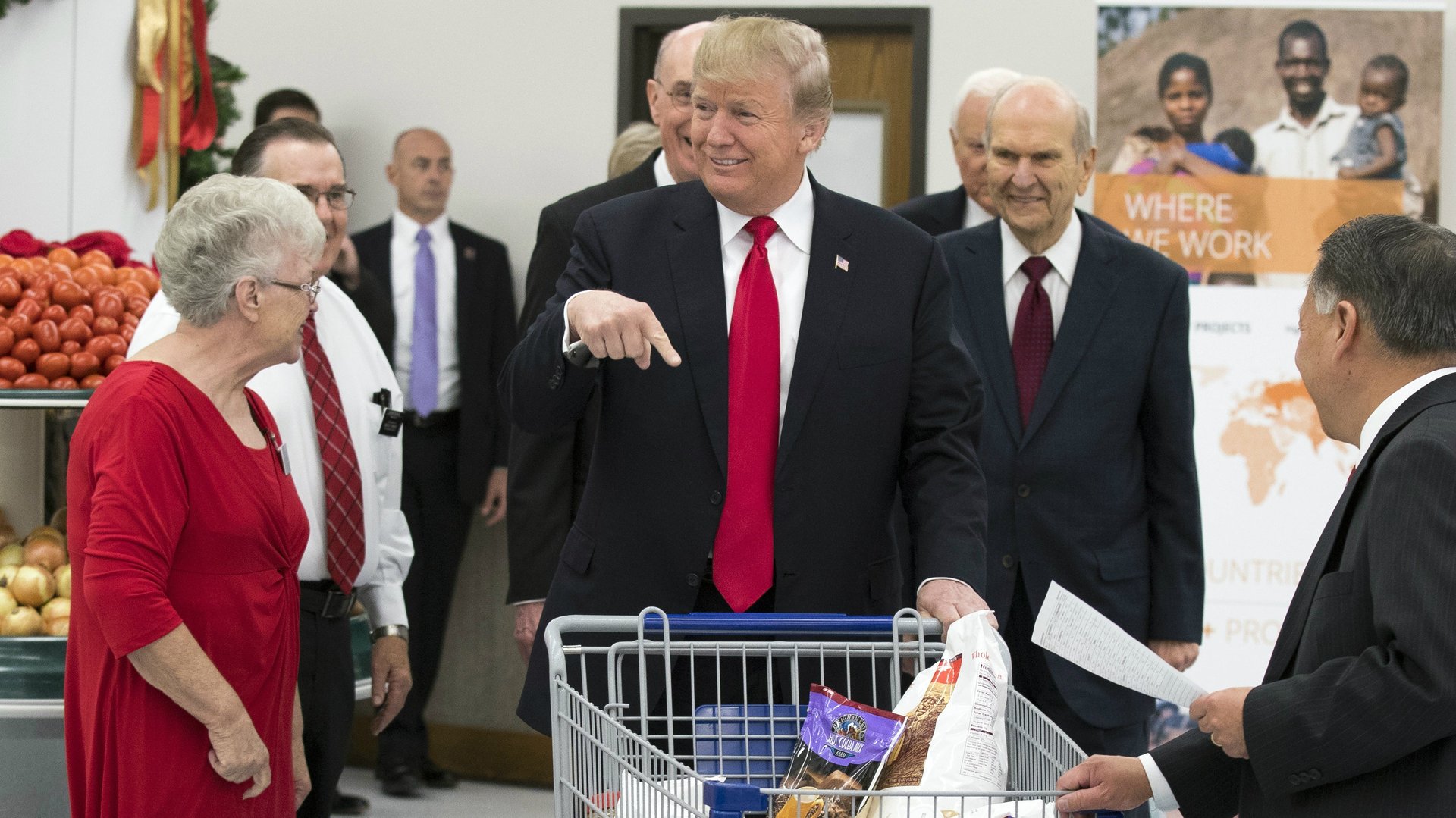Trump wants food stamps to work like Blue Apron—but with no fresh foods
Blue Apron may be losing money, but that hasn’t deterred Donald Trump from proposing the high-end meal-kit company be a loose model for the federal food stamps program.


Blue Apron may be losing money, but that hasn’t deterred Donald Trump from proposing the high-end meal-kit company be a loose model for the federal food stamps program.
The White House’s 2019 budget request (pdf)—a wish list for Congress to take under consideration—includes a plan to revamp the government program that ensures lower-income people have access to food. Trump official Mick Mulvaney sold the idea as one that would modernize the Supplemental Nutrition Assistant Program (SNAP) by casting it as a “Blue Apron-type program.”
One catch among many: It wouldn’t include fresh fruits or vegetables.
It would be called “America’s Harvest Box,” and it would include a slew of food products grown and produced in the US to to people enrolled in the program. The emphasis would be on shelf-stable items, such as canned fruits and meats, cereal, and peanut butter, according to Politico. That’s in contrast to the current system, in which SNAP recipients can make subsidized grocery purchases of pre-approved items, which include pretty much anything in the fresh produce and meat sections.
The White House is making the case that the delivery service would save taxpayers about $129 billion over 10 years.
It would be a massive undertaking. Keeping the US Postal Service afloat is already a difficult task, let alone asking the US Department of Agriculture to develop and oversee a plan that would routinely deliver millions of low-income families food packages in every state of the country. As Politico put it, it’s not an idea that’s ever been promoted by the food and retail industries, previous administrations, or even conservative think tanks.
The Trump administration added that the federal government could pass the responsibility for making the program work to the states, effectively passing the cost and a logistical nightmare to statehouses, who would essentially have to figure out how to replicate what Amazon took years to establish.